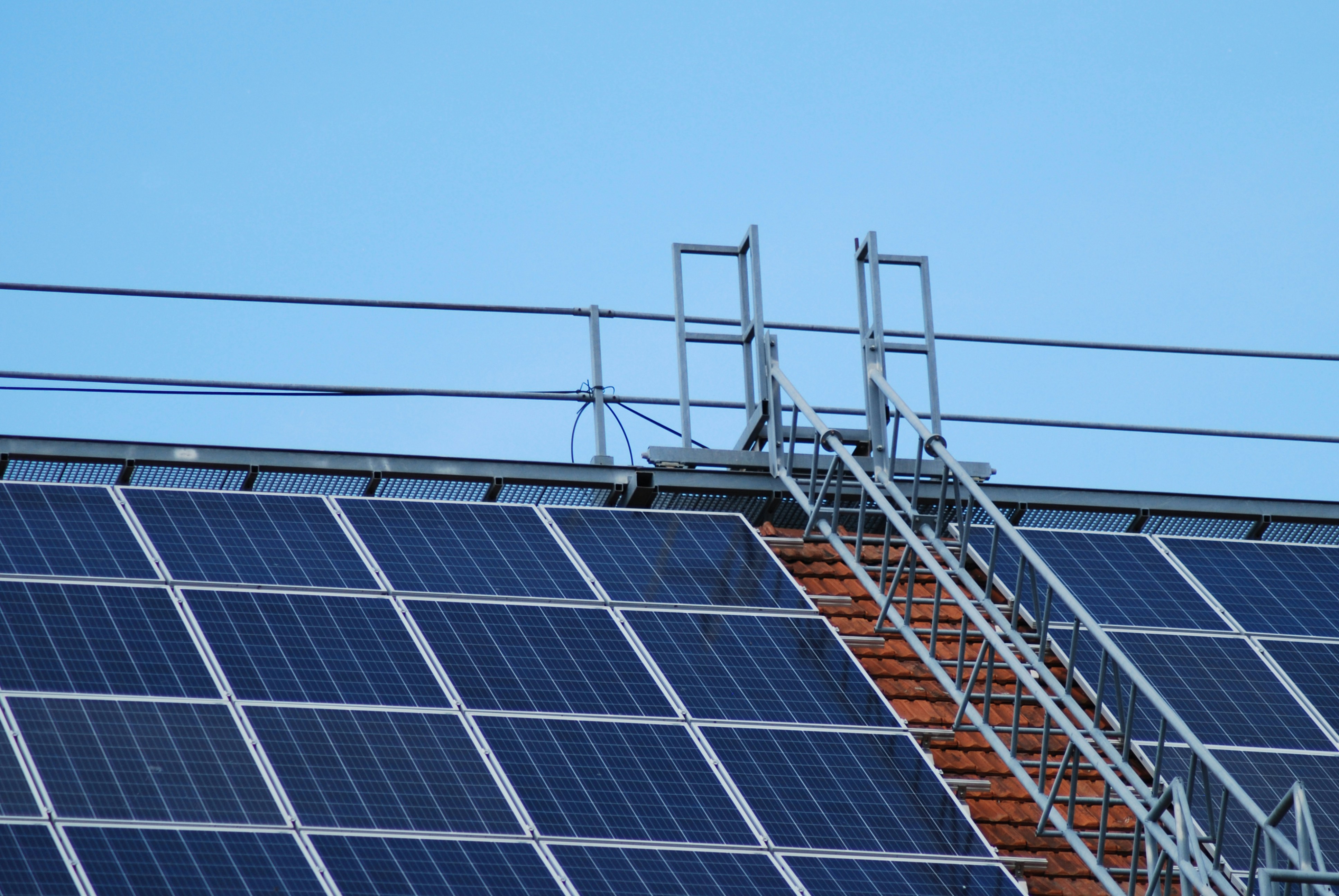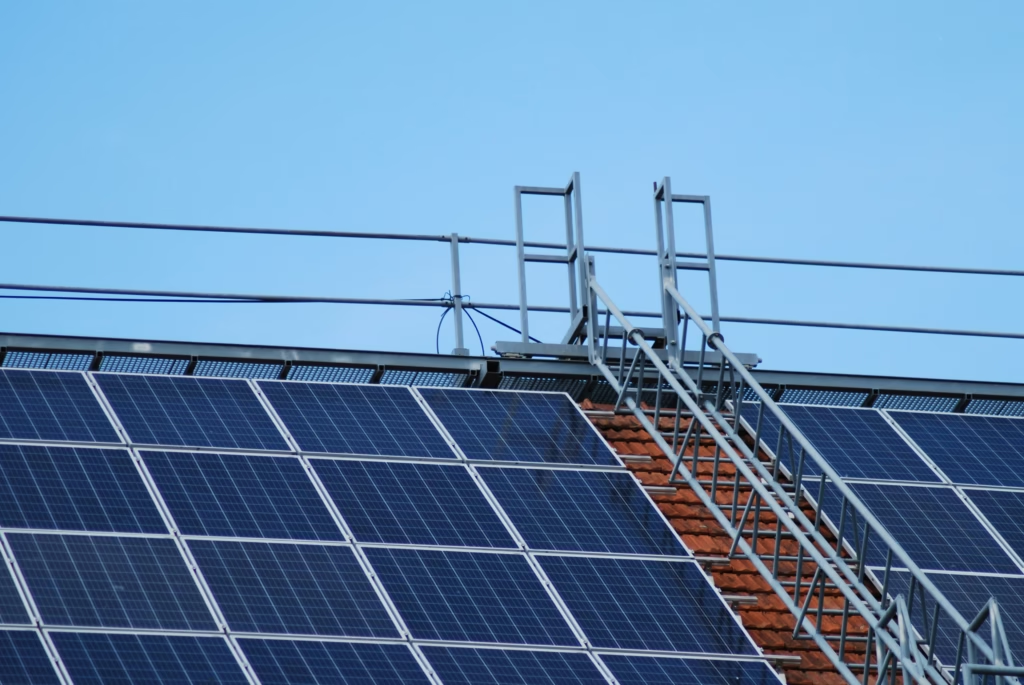
A Comprehensive Guide to Solar PV System Installation and Maintenance in the Philippines

Introduction to Solar Energy in the Philippines
Solar energy, as a significant component of renewable energy, has garnered considerable attention in the Philippines due to its abundance and versatility. The nation, situated near the equator, receives a substantial amount of sunlight throughout the year, making it an ideal candidate for harnessing solar power through photovoltaic (PV) systems. The importance of solar energy in the Philippines extends beyond mere feasibility; it plays a crucial role in addressing the country’s escalating energy demands and the urgent need for sustainable solutions.
The increasing prevalence of solar PV systems in the Philippines is attributed to several factors. Firstly, there is a growing recognition of the financial benefits associated with solar energy adoption, particularly in reducing electricity costs. As traditional energy prices rise, more individuals and businesses are turning to solar power as a means of achieving energy independence, where reliance on external grid sources diminishes. Furthermore, the implementation of feed-in tariffs and various government incentives has spurred residential and commercial investments in solar technologies, contributing to a robust market ecosystem.
Moreover, the Philippine government has outlined ambitious renewable energy goals aimed at increasing the share of renewables in the national energy mix. This national commitment aligns with global initiatives to combat climate change and reduce greenhouse gas emissions. Solar energy, given its scalability and accessibility, is positioned to play a pivotal role in achieving these targets. As communities transition to cleaner energy sources, the focus on solar PV systems continues to grow, representing not just a shift in energy policy but a broader movement towards sustainable development. This change fosters an environment that promotes technological innovation, local job creation, and energy resiliency across the archipelago.
Understanding Solar PV Technology
Solar photovoltaic (PV) technology harnesses sunlight and converts it into electricity through the photovoltaic effect, a process where certain materials generate electrical energy when exposed to sunlight. Solar panels, the primary components in this system, are composed of numerous solar cells that work collaboratively to capture and convert sunlight. The efficiency of these conversions is heavily influenced by the type of solar panel in use.
There are three main types of solar panels: monocrystalline, polycrystalline, and thin-film. Monocrystalline panels are made from a single crystal structure and are known for their high efficiency, typically ranging between 15% to 22%. Their sleek black appearance and space-efficient design make them a popular choice for residential installations. However, they tend to be more expensive due to the complex manufacturing process, which could limit widespread adoption in budget-sensitive applications.
Polycrystalline solar panels consist of multiple silicon crystals and generally have a lower efficiency, ranging from about 13% to 16%. They are recognizable by their bluish hue and are more affordable to produce, making them an attractive option for those weighing cost against performance. While they occupy more space due to their lower efficiency, they are a commonly adopted choice in many solar projects due to good balance between performance and cost-effectiveness.
The third type, thin-film solar panels, are made by layering photovoltaic materials onto a substrate. These panels are lightweight and flexible, allowing for versatile applications such as integration into building materials. However, their efficiency typically falls between 10% to 12%, making them less attractive for high-performance requirements but useful in unique installations or where space is not as critical.
Each type of solar panel has its unique advantages and disadvantages, ensuring that consumers can select a system that best meets their energy needs and budget considerations. Understanding these fundamentals is crucial for anyone considering the installation of a solar PV system in the Philippines.
Assessing Your Energy Needs
Before embarking on the installation of a solar photovoltaic (PV) system, it is essential to accurately assess your energy needs. This evaluation serves as a foundation to determine the appropriate size and type of solar PV system that will best suit your household or business requirements.
Start by analyzing your electricity bills over the past year. Look for the average monthly consumption, which is typically measured in kilowatt-hours (kWh). Most utility bills detail this information, enabling you to pinpoint your average usage. Keep in mind that energy consumption can vary seasonally; thus, consider calculating the monthly averages to obtain a clearer picture of your overall needs.
Next, it is practical to evaluate your daily energy use. You can do this by taking the total kWh consumed monthly and dividing it by the number of days in that month. For instance, if your monthly consumption is 300 kWh, its daily equivalent would be approximately 10 kWh. This figure can help inform your solar PV system design.
Additionally, peak sunlight hours are crucial in determining solar output. In the Philippines, the average peak sunlight hours range from 4 to 6 hours per day, depending on the location and season. Multiply your daily energy consumption by the total hours of peak sunlight to estimate the solar panel capacity required. For example, if you need 10 kWh per day and receive 5 peak sunlight hours, you would need a system size of approximately 2 kW (10 kWh / 5 hours = 2 kW).
Finally, consider future energy needs, such as potential increases due to adding new appliances or expanding your home. Taking all these factors into account allows for a comprehensive understanding of your energy footprint, ensuring that your solar PV system installation is appropriately tailored to your specific requirements.
Choosing the Right Solar Installer
When considering the installation of a solar photovoltaic (PV) system, selecting the right solar installer is crucial for achieving optimal performance and satisfaction. In the Philippines, where the demand for renewable energy solutions is increasing, a myriad of options may make this choice daunting. However, several key factors can aid in your decision-making process.
First and foremost, certifications play a significant role in determining the reliability of a solar installation company. It is advisable to look for installers who are accredited by reputable organizations, such as the Department of Energy (DOE) in the Philippines or the National Renewable Energy Board (NREB). These certifications ensure that the installer adheres to recognized standards and practices in solar energy systems, thus enhancing your overall peace of mind regarding installation quality.
Additionally, customer reviews serve as a valuable resource when assessing a solar installer. Past clients’ experiences provide insights into the company’s workmanship, professionalism, and reliability. Look for testimonials on independent review platforms to gather objective feedback. Here, you may also consider visiting the solar company’s social media pages or online forums for a more interactive perspective on their service.
Warranties and after-sales support are other essential factors to consider. A reputable installer should offer a comprehensive warranty that covers both the solar equipment and the installation work. This commitment reflects the installer’s confidence in their services and provides you with additional security should any issues arise post-installation. Furthermore, inquire about the availability of after-sales support, as ongoing maintenance is crucial for maximizing the efficiency of your solar PV system.
Finally, obtaining quotes from multiple solar installers is a practical step to ensure competitive pricing. By comparing quotes, you can assess the comprehensive nature of the services offered, including equipment quality and installation methodology. A detailed breakdown of costs can also highlight hidden fees or additional services, aiding in a more informed choice.
Installation Process of Solar PV Systems
The installation of a solar photovoltaic (PV) system is a multi-step process that requires careful planning and execution to ensure optimal performance and compliance with local regulations. The first step in the installation process is conducting a site assessment. This involves evaluating the property’s actual location, roof orientation, shading factors, and structural integrity to determine the suitability for solar panel installation. A qualified installer typically performs this assessment, considering both current conditions and future developments that might affect the solar system’s efficiency.
Following the site assessment, the next step is the system design phase. In this phase, the installer collaborates with the homeowner to design a customized solar PV system that meets their specific energy needs and budget. This includes selecting the appropriate type and number of solar panels, inverters, and additional components, such as batteries for energy storage. Once the design is finalized, the installer will help the homeowner navigate the permitting process, which involves obtaining the necessary approvals from local authorities and utility providers.
The physical installation of the solar PV system typically begins once permits are secured. This stage entails mounting the solar panels, usually on the roof or designated ground space, connecting them to inverters, and integrating the system with the home’s electrical framework. Installation can typically take one to three days, depending on the system’s complexity and size. Homeowners should be prepared for possible disruptions to their daily routine as technicians install and test the system.
After installation, the system will undergo a final inspection to ensure everything adheres to safety standards and regulatory requirements. Once completed, the solar PV system can be activated, enabling homeowners to start enjoying the benefits of renewable energy. Overall, the solar PV installation process can take several weeks from start to finish, from the initial site assessment to system activation. Homeowners should remain in communication with their installers throughout this timeline for updates and guidance.
Solar PV System Maintenance Essentials
Maintaining a solar photovoltaic (PV) system is crucial for ensuring its optimal performance and longevity, especially in a climate like that of the Philippines, which can include intense heat, heavy rainfall, and typhoons. Regular maintenance tasks should focus on inspections, cleaning, performance monitoring, and prompt repairs to mitigate any issues.
First and foremost, performing regular inspections is essential. This entails checking the entire solar PV system, including components such as solar panels, inverters, and mounting structures. Inspections should ideally occur at least once every six months, but more frequent checks may be necessary after severe weather conditions. During these inspections, technicians assess for physical damage, accumulation of dirt, and any loose connections that could affect system efficiency.
Cleaning solar panels is another vital maintenance task. In the Philippines, dust from the environment, along with organic materials like bird droppings, can accumulate on panels, reducing their ability to capture sunlight. A general cleaning regimen might involve lightly rinsing the panels with water and utilizing soft brushes to avoid scratching the surface. While rain can assist in cleaning, a more proactive approach ensures that the panels remain in peak condition.
Monitoring the performance of the solar PV system is also a necessary maintenance practice. Many systems come equipped with monitoring tools that track output and efficiency metrics. Consistently analyzing these data points can highlight any drop in performance, prompting immediate action to diagnose and address issues. If performance dips below expected levels, further investigation is warranted.
Lastly, prompt repairs are critical for maintaining the integrity of the solar PV system. Any detected damage, whether to wiring or panel surfaces, should be addressed as soon as possible to prevent further degradation. In a country prone to extreme weather events, maintaining a proactive repair schedule can significantly enhance the lifespan and effectiveness of solar energy systems.
Understanding Government Policies and Incentives
The Philippines has made significant strides towards promoting solar photovoltaic (PV) systems as part of its commitment to renewable energy and sustainable development. This commitment is reflected in a range of government policies and incentives aimed at encouraging the adoption of solar technology. Central to these initiatives is the net metering program, which allows solar PV system owners to sell excess electricity back to the grid. Under this program, individuals and businesses can offset their energy costs by receiving credits for the surplus energy they generate, fostering a more appealing financial landscape for renewable energy investments.
In addition to net metering, there are various tax benefits available to both residential and commercial solar PV system owners. The Renewable Energy Act of 2008 establishes these incentives, providing opportunities such as an income tax holiday for solar companies and a 7-year exemption from the value-added tax (VAT) on renewable energy sales. These fiscal policies significantly minimize the initial capital expenditure associated with solar PV installation, thereby promoting wider acceptance among consumers.
To further facilitate the integration of solar energy into the national grid, the Department of Energy (DOE) and the Energy Regulatory Commission (ERC) oversee the implementation of several programs that offer additional support for solar projects. Notably, the DOE’s Renewable Energy Management Bureau actively disseminates information about available incentives and assists with compliance requirements. For more detailed guidance, stakeholders are encouraged to visit the official websites of the DOE and the National Renewable Energy Board (NREB), where comprehensive resources and updates on solar PV policies can be found. The Philippines’ commitment to solar energy, reinforced by these government policies and incentives, demonstrates a forward-thinking approach to sustainable power generation, ensuring a brighter, greener future for all citizens.
Cost Analysis of Solar PV Systems
The financial implications of installing a solar photovoltaic (PV) system in the Philippines involve several components that require careful consideration. Initially, the cost of purchasing and installing a solar PV system can vary significantly depending on the size of the system, the type of panels chosen, and installation charges. Typically, the upfront investment for residential systems can range from approximately PHP 100,000 to PHP 300,000.
Aside from the installation costs, it is vital to assess the potential savings on electricity bills. Households and businesses that install solar PV systems can significantly reduce their electricity expenses, especially in regions where electricity rates are high. In general, solar installations can cover around 80% of an average household’s energy needs, leading to annual savings that can amount to PHP 20,000 to PHP 30,000, depending on energy consumption patterns.
The return on investment (ROI) for solar PV systems in the Philippines is another crucial factor. Homeowners and businesses typically begin to see a payback period ranging from five to seven years, depending on their initial investment and energy savings. As electricity prices increase over time, the ROI improves, making solar PV systems increasingly attractive over the long term.
Moreover, various financing options are available for those considering solar installation. These options include bank loans, solar leasing arrangements, and government incentives that can alleviate the financial burden of the initial investment. Various banks have developed loan products tailored specifically for solar systems, enabling homeowners to finance their installations with flexible payment options. Further, the Philippine government offers tax incentives and net metering policies, allowing consumers to benefit from excess energy produced, thereby enhancing overall savings.
The Future of Solar Energy in the Philippines
The solar energy market in the Philippines is entering a pivotal phase characterized by rapid advancements and increasing consumer awareness. With a geographical advantage of high solar irradiance throughout the year, the Philippines is ripe for a transition towards renewable energy sources. Various trends are emerging that shape the future of solar energy in the country, including technological innovations, supportive policy frameworks, and a growing emphasis on sustainability among consumers.
One notable trend is the evolution of photovoltaic (PV) technology, leading to the development of more efficient solar panels with enhanced energy conversion rates. Innovations such as bifacial solar panels and building-integrated photovoltaics (BIPV) are making solar energy more accessible and appealing for both residential and commercial applications. These technological advancements promise not only to lower costs but also enhance the efficiency of solar installations, positioning solar energy as a competitive player in the overall energy mix in the Philippines.
Additionally, recent policy changes have contributed to a more favorable environment for solar energy deployment. The Philippine government is moving towards more ambitious renewable energy targets, with various incentives and financing options introduced to encourage investment in solar technologies. Regulatory reforms aimed at simplifying the installation process and enhancing net metering capabilities are further encouraging households and businesses to transition to solar energy.
The growing awareness of climate change and its impacts is transforming consumer behavior, with an increasing number of Filipinos advocating for sustainable energy solutions. This shift in public perception is driving demand for solar energy, as more people recognize its potential to mitigate environmental issues. As the nation progresses towards its renewable energy goals, solar energy is projected to play a critical role in shaping a sustainable and resilient energy landscape in the Philippines.
- July 4, 2025
- 240
- Energy & Environment
- 0 comment







Add Comment